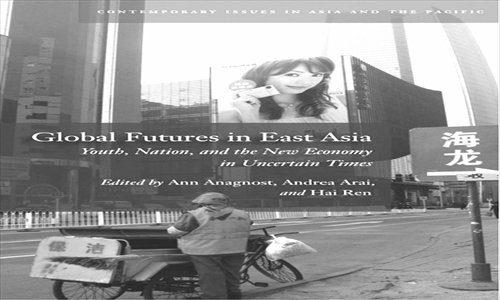Uncertainty and ambition link East Asian youth in nervous times

East Asia is one of the most rapidly shifting regions in the world, and the identities and futures that once seemed certain two decades ago have now been jumbled beyond recognition.
The introduction to Global Futures in East Asia: Youth, Nation, and the New Economy in Uncertain Times, published by Stanford University Press and edited by Ann Anagnost, Andrea Arai, and Hai Ren, describes a case where Japanese students were shown pictures of young laborers boarding a bus to go to short-term, poorly-paid contract work. They assumed the scene was in China. In actuality, it was contemporary Japan.
In a time of rising tensions in the region, the attitudes and possibilities of the young are critically important.
The new book offers important insights, although it is perhaps over-concerned with the idea of neo-liberalism, which nebulously links together a wide range of government or market initiatives conducted under very different circumstances.
At points, ideology appears to overwhelm specificity, and some articles become bogged down in jargon and attempting to impose a theoretical framework on a local reality.
Trang X. Ta's essay, "On the Streets of Beijing," is the best in the book, moving from the tragic story of a rural couple trying to raise the funds to treat their critically ill son to a general consideration of the place of melodrama and personal stories in a media-conscious, trust-poor society. "The urban dweller is guarded against any attempt to manipulate his or her emotions. Beggars on the streets are dismissed as calculating actors."
Ta highlights how the presentation of rural deprivation as individual tales in Chinese media often strips them of their social conscience and removes their power to generate change. Tales such as the couple's can be "portrayed as a tragedy on a singular scale rather than a public illustration of slow death for rural families." By switching the focus to personal appeals for donations, Ta suggests, we lose sight of government responsibility.
Other articles on China highlight the displaced role of migrant labor, and the class and regional prejudices that pervade the new urban lifestyle. Hai Ren's essay on the Chinese Ethnic Culture Park presents a fascinating picture of consumption and division within the context of China's attempts to develop a "stable" middle class.
For Chinese readers concerned about rising Japanese nationalism, Andrea Arai's "Notes to the Heart: New Lessons in National Sentiment and Sacrifice from Recessionary Japan" emphasizes the role economic downturn and personal uncertainty has played in creating new narratives of patriotism and dedication to the nation.
When it comes to cross-border sympathies, East Asian readers of all stripes may find they have more in common with their counterparts in other nations than they thought, as the articles draw out the identity issues, worries about the future, and attempts to define themselves against social pressures that link East Asian youth.
This is a useful collection for anyone interested in the region, and especially for young East Asians looking to analyze their own present, and to learn of the experiences of others.